Diary of Anais Nin Volume 6 Read online
Table of Contents
Title Page
Table of Contents
Copyright
Dedication
Preface
[Fall, 1955]
[Winter, 1955–1956]
[January, 1956]
[Spring, 1956]
[Summer, 1956]
[Fall, 1956]
[Winter, 1956–1957]
[Spring, 1957]
[Summer, 1957]
[Fall, 1957]
[Winter, 1957–1958]
[Spring, 1958]
[Summer, 1958]
[Winter, 1958–1959]
[Spring, 1959]
[Summer, 1959]
[Fall, 1959]
[Winter, 1959–1960]
[Spring, 1960]
[Summer, 1960]
[Fall, 1960]
[Winter, 1960–1961]
[Spring, 1961]
[Summer, 1961]
[Fall, 1961]
[Winter, 1961–1962]
[Spring, 1962]
[Summer, 1962]
[Fall, 1962]
[Winter, 1962–1963]
[Spring, 1963]
[Summer, 1963]
[Fall, 1963]
[Winter, 1963–1964]
[Spring, 1964]
[Summer, 1964]
[Fall, 1964]
[Winter, 1964–1965]
[Spring, 1965]
[Summer, 1965]
[Winter, 1965–1966]
[Spring, 1966]
Index
About the Author
Copyright © 1966, 1976 by Anaïs Nin
Preface copyright © 1976 by Gunther Stuhlmann
All rights reserved.
No part of this publication may be reproduced or transmitted in any form or by any means, electronic or mechanical including photocopy, recording, or any information storage and retrieval system, without permission in writing from the publisher.
For information about permission to reproduce selections from this book, write to Permissions, Houghton Mifflin Harcourt Publishing Company, 215 Park Avenue South, New York, New York 10003.
www.hmhbooks.com
The author wishes to thank the following for their permission to reprint the material listed: the Los Angeles Times for "Wail of Tortured Electrons Provides Eerie Film Score," by Philip K. Scheuer, copyright © 1956, Los Angeles Times, and for "Journal of a Troubled Journey," by Robert Kirsch, copyright © 1966, Los Angeles Times; The New York Times Company for "The Playwright's Role," by Eugene Ionesco, copyright © 1958 by the New York Times Company; the San Francisco Examiner for "Paradise Lost by Mexico LSD Colony," by George Dusheck, San Francisco News-Call Bulletin, July 2, 1963.
The Library of Congress has cataloged the print edition as follows:
Nin, Anaïs, 1903–1977.
The diary of Anaïs Nin.
(A Harvest/HBJ book)
CONTENTS:
[6] 1955–1966.
Includes index.
1. Nin, Anaïs, 1903–1977—Diaries.
2. Authors, American—20th century—Biography.
I. Stuhlmann, Gunther. II. Title.
PS3527.1865Z5 1977] 818'.5'203 [B] 77-3599
ISBN 0-15-626032-8
eISBN 978-0-544-15093-5
v1.1212
This volume is dedicated to Doctors
Raymond Weston, Maclyn Wade,
Leon Morgenstern and Edward Stadler,
who saved my life in January, 1975.
And to nurses Jo Martinson and Mary Maxwell, who
gave me their own courage and energy.
Preface
During the summer of 1965, while plans for the publication of her diaries were taking definite shape, Anaïs Nin had a dream which, in symbolic shorthand, seemed to project her ambivalence about finally exposing her great undertaking to the world. When, in her dream, she opened the door of her house, she was struck by a blinding flash of light—by "mortal radiation," as she recorded it. Apparently, stepping out of the lifelong shelter of the Diary, her true home, posed many potential dangers.
Since their inception, Anaïs Nin's journals had flourished in a climate of secrecy. Protection from prying eyes, from outside judgment, had been a precondition of their growth, their continued existence. Once the original cri de coeur of the child, conceived as an open letter to the lost father, had become the opium pipe of a young woman's reflections, the warm comfort of confidentiality alone had insured the uncensored spontaneity which provided the impetus, the basic strength, for this ongoing dialogue with a nascent self. Since the 1920s, when Anaïs Nin, in the wake of her early marriage, had begun to secrete the growing pile of slim, handwritten volumes, they had remained in hiding for most of their existence.
Occasionally, in a grand gesture of affection—and at times perhaps to evoke an echo from her solitary enterprise—Anaïs Nin had shown portions of her diaries to a few trusted friends. In France, in the 1930s, she had offered up sections to June and Henry Miller, to psychoanalyst Dr. Otto Rank, to the young Lawrence Durrell. In New York, in the 1940s, she had shared such confidences with some of the "children of the albatross." Undoubtedly, such exposure had contributed, by word of mouth, sometimes in print, to the growing reputation and the quasi-legendary status of her diaries. Enthusiastic friends, economic pressures, anger and frustration at being ignored as a writer, at times had propelled Anaïs Nin into considering publication of her diaries. Indeed, with some reluctance she had prepared edited versions for potential publishers. But all such partial revelation, such breaking of the seals, had been momentary, confidential, always based on trust and friendship.
Anaïs Nin, in her own phrase, had regarded the Diary mostly as "a work of love." As such, her journals had always been handled with the protective care accorded to love itself. This was only natural as long as the Diary served as a confidante, a trusted friend, as an island retreat in a hostile, hurtful, indifferent world. But even as its functions changed, enlarged, as it grew into a more consciously applied tool, the laboratory, the instrument, of her own creation, as it became a magic wand against forgetfulness, against the passage of time, the Diary had been nourished as a private document. To expose such a work to the public, to casual scrutiny, obviously was fraught with mortal danger, as her dream so strongly implied, both for the Diary itself and for its author.
The sudden flash of exposure could easily burn forever the delicate fabric of her relationships with all those who had been captured in the labyrinth of these diaries. It could blister those nearest her, whose lives had been so closely intertwined with hers but whose "portraits" she felt did not properly belong to her alone. It could hurt those who, in moments of personal intimacy, in the confessional of psychoanalytical consultation, had entrusted her with their confidences.
Moreover, exposing the unguarded thoughts, reactions, evaluations, that she had committed to paper without the intent of ultimate disclosure, without the safeguard of artistic rearrangement, would reveal the uncertain woman, unveil the person behind the public persona, lay her open to "the maliciousness of the world." Perhaps most ominously, opening up the Diary might easily jeopardize this final refuge of her self-esteem, the stronghold of her reputation as a writer, as an artist. Exposed to the cold light of the same critics who in the past had ignored, misunderstood, or casually dismissed her deliberate creations, her sometimes self-published novels and stories, would the much-whispered-about diaries, the submerged body of what Anaïs Nin had so industriously, so carefully accreted over a lifetime, crumble into the dust of neglect and hostility?
Although her personal faith in the value of the diaries was unshakable, alerted by her dream, Anaïs Nin grew anxious and fearful. In New York, she consulted her analyst, Dr. Inge Bogner. Perhaps it would be best never to reveal the diaries. Throughout the years she had been urged, advised, to give up what she herself had sometimes regarded as her "neurotic" and "narcissistic" preoccupation. The fate of the diaries—their existence, their continuation—more than once had hung in a precarious balance. Suffering from "guilt and concern" about their content, about the effect they might have on others, she had resolved, once more, in 1955 to burn the diaries. Yet, as so often in the past, she had neither burned the diaries nor stopped keeping them.
Ten years later, Anaïs Nin was still hesitant, apprehensive about the consequences of revelation: "How do you tell the truth without injuring the lives of others? How do you define injury when this damage varies with each person portrayed, with each situation, with each period of time?" But she has come to an inexorable conclusion: "I have to venture, not with a work of art, separate from myself, but with myself, my body, my voice, my thoughts, all exposed."
While the blinding flash of her dream spelled danger, obviously it also symbolized release of an enormous reservoir of pent-up energy, a powerfully liberating explosion. For the slim notebooks of Anaïs Nin's youth had become, by 1965, a massive accumulation. Assembled over half a century, shifted from Louveciennes to Greenwich Village, to storage bins in San Francisco, in Los Angeles, almost lost in Europe in the turmoil of World War II, they now filled two five-drawer file cabinets in a Brooklyn bank vault. The sheer bulk of material, with its burdensome secrecy, the emotional weight of its content, the overwhelming significance of the diaries in shaping and creating her own life, undoubtedly had begun to exert increasing pressures on Anaïs Nin.
Here in these pages, after all, was contained what she regarded as her true lifework, her "most natural, most truthful" writing. The wo
rld, hitherto, had seen only a few outcroppings from this mountain of material, consciously created, in the fragmented form of her published novels and stories. The key to her fiction (and to her standing as an artist) was hidden in its essential source, the Diary.
As Anaïs Nin confesses here, she has had, since her childhood, "a fear of imagining and inventing." The "imaginative work of man" for her "had become equated with a separation from human life." To invent a fully developed character, to work up a "proper" story line, to carry an artistic message, to provide a balanced structure—as the critics of her fiction so often demanded—was anathema to her. It meant to impose a plan, a concept, a finite quality, to something that, to her, was forever in flux, that retained its vitality only by being infinite in its prospects.
The heartbeat, the elusive propellant, of Anaïs Nin's Diary was its continuous flow, the constant progression of the day-to-day adventure of living, spontaneously recorded. As long as people were alive, vitally changing and shifting with the light under which they were seen, they retained their possibilities of growth, and no finite quality could be ascribed to them. When they became stationary, fully outlined in imagination by the writer, embalmed, as it were, in a static dimension, when they were no longer nascent, they dropped out of life, they disappeared from the Diary. In her journals, Anaïs Nin could not foresee the next event, the subsequent development, she could only be reactive. To plan ahead, to impose a logical order, to project into the future—that is, to imagine and invent—was not possible. She could only observe, analyze, listen to the secret signals of the self, tune in to the "dream" and its poetic creations that transcended the conscious efforts of the mind. "I am an explorer," Anaïs Nin had written in 1941. "I must visit the lands I am to describe."
While her published fiction had used elements drawn from actual experiences and real people recorded in the diaries, it had always avoided the final stasis of reproduced reality. Taken from an ongoing flow, thus by necessity fragmentary, inconclusive, it had adopted as its method the same principles that had evolved in the shaping of the diaries. Anaïs Nin's fiction, like her Diary, had sidestepped mere verbal photography, documentation, the accumulation of plain facts, the piling-up of anecdotes. "My only discipline has been to cut out the unessential," she had written back in 1942. Against what she considered the perversions of objectivity, Anaïs Nin had pitted her own reflective sensibilities, her openness towards experience.
When she tapped into a strong emotional flow, she could delve into a person's story at great length, with infinite care. On the other hand, where there was no intense crosscurrent of sympathetic response, she could with a few words dismiss an encounter with someone like Charlie Chaplin, which to another person might have yielded a substantial anecdote. Sometimes Anaïs Nin is baffled by the contrast between the factual, the outside world, and her own perceptions. "When I meet these same people in reality, accidentally, I cannot understand or reconstruct the love, the friendship, the exchange and bonds between us. The encounters are deprived of the luminous incandescence I presented in the Diary." The magic, it seems, is often derived from the reflection of the encounter, the intensity of her perceptions, rather than from the facts themselves.
"I wage a constant war against reality," Anaïs Nin admits. The Diary is her only bridge to "earthly life," her sole connection to a world not of her making. ("I am living in the wrong world for the sake of protection, the protection which the conventional life offers with its rules, strictures, legalities.") Only the Diary offers her an arena in which she can be free, where she can pursue her true life. But as long as the Diary must remain a secret, her published fiction is the sole "dynamite" that can blast her "out of isolation."
Faced with the continuing frustrations of her uncertain publishing career, Anaïs Nin, by 1965, had reached the point where her submerged feelings surfaced forcefully and fully articulated: "I felt the need to publish the Diary as strongly as the snake pushing out of its old skin, grown too tight, too small." She was ready to break through. Indeed, as we now can see in retrospect, her subconscious striving to relieve the pressure, to reveal her essential lifework, had been gathering momentum all along. Throughout the 1950s, we find Anaïs Nin increasingly concerned about the form and shape of what once had been an almost instinctive vehicle. While she is typing up the original diaries, volume by volume, she is also imposing new critical standards upon her once spontaneous undertaking. With a more relaxed self-appraisal, with a new sense of maturity ("I feel installed in the present," she is able to write in 1955. "My anger against America is gone") also comes a new craftsmanlike assessment of her diaries. Had her perception of the truth indeed cap tured the essential reality of those she had portrayed? Was her version of what had transpired at the "heightened moments" of awareness—which had served as the benchmark of her reflections, her selective criterion—accurate and fair? Had her own selfpreoccupation fostered distortions, crucial omissions? "It took me a lifetime to learn that happiness is in quiet things, not in the peaks of ecstasy," she writes. Is she then also able to step back, to look at her diaries as something outside of herself, outside of her "personal intuition"?
"I felt suddenly that the very personal quality of the Diary was incomplete," Anaïs Nin notes in the spring of 1962. "I had sacrificed objective knowledge....I suddenly wanted to see people from all angles." With a firming sense of self her emotional dependence on her secret "vice" obviously was waning: "I stopped writing in the Diary." Free of her old "hypersensitivity," she feels capable of approaching the earlier diaries with "the care, the patience, the craftsmanship, the thoroughness" she had lacked previously, which in fact had not been called for as long as no disclosure of the diaries had been contemplated.
While Anaïs Nin is shaping her Mexican experiences into Seduction of the Minotaur (published in 1961 by her new publisher, Alan Swallow), while she is collating some of her West Coast and New York encounters into "Count Laundromat" (published as Collages in 1964) by using sections culled from the diaries, she is preoccupied on another level with the prospect of the Diary's publication. Retyping the original volumes, filling out, updating some of her "portraits," she is striving not for impersonality, distance, but for a "new objectivity," as she put it. Late in 1962, she writes: "I am starting now as a diary-writer and realist." The emotional intensity of the earlier notebooks has given way to a cooler—if as yet largely unspoken—concern over how to make their eventual publication feasible.
By early 1963, Anaïs Nin had decided "to retire as the major character of the Diary." The old diaries are dead, a major shift has taken place, from now on "the Diary will be called the Diary of Others." Obviously, it is to be not only given over to others as the subjects of her concern, but also offered to others, to us, the outside world, as a gift, the signal of a final liberation that no longer requires secrecy, by a woman at last able to shed her protective veils, to step out into the light and stand alone.
"I became deeply interested in the problem of editing, how to avoid hurting or damaging people. How to reveal in such a subtle way that no explicit statement could be deduced, no facts." No longer in need of protecting herself, Anaïs Nin now worries about others, about the frankness of her portraits, about how to "reveal without the destructive aspects of revelation. How to extract the essence of life without damage." Full disclosure, publication of the entire Diary, in its raw form, is impossible but, she argues, "there was plenty of material so that what could not be published would not be missed." Spurred by the strong desire to publish, a way to publish could surely be found.
Anaïs Nin's concern was not so much with conventional indiscretion, not with the increasingly fashionable biographical and autobiographical revelation of the permissive sixties, of the sexual revolution. "It was not in my nature," Anaïs Nin confesses, "to be explicit in sexual matters." The taboo she imposed, by her own admission, on "sensual matters," though fostered perhaps by her Spanish-Catholic upbringing, by the damaging effects her father's indiscretions had had upon her life as a child, originated primarily in her romantic, poetic sensibilities, which made even her attempts at writing pornography, as we have seen, a fanciful erotic adventure.

 Diary of Anais Nin, Volume 5
Diary of Anais Nin, Volume 5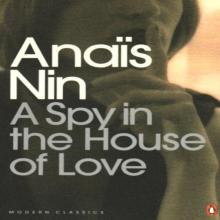 A Spy in the House of Love
A Spy in the House of Love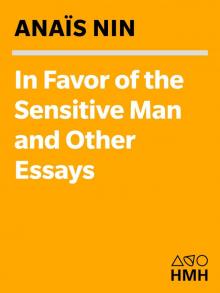 In Favor of the Sensitive Man and Other Essays (Original Harvest Book; Hb333)
In Favor of the Sensitive Man and Other Essays (Original Harvest Book; Hb333)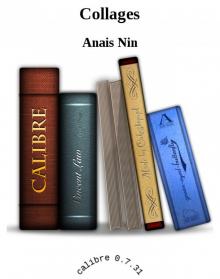 Collages
Collages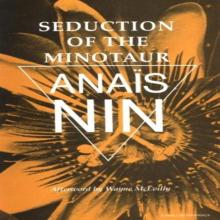 Seduction of the Minotaur
Seduction of the Minotaur Children of the Albatross
Children of the Albatross Delta of Venus
Delta of Venus The Four-Chambered Heart coti-3
The Four-Chambered Heart coti-3 Diary of Anais Nin, Volume 2
Diary of Anais Nin, Volume 2 Diary of Anais Nin, Volume 1
Diary of Anais Nin, Volume 1 Diary of Anais Nin, Volume 4
Diary of Anais Nin, Volume 4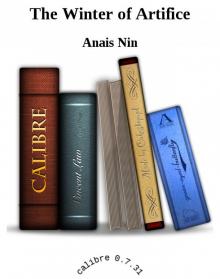 The Winter of Artifice
The Winter of Artifice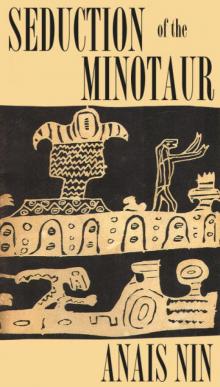 Seduction of the Minotaur coti-5
Seduction of the Minotaur coti-5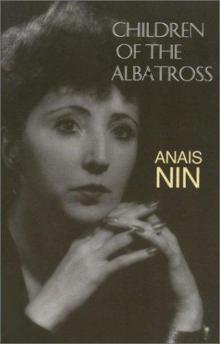 Children of the Albatross coti-2
Children of the Albatross coti-2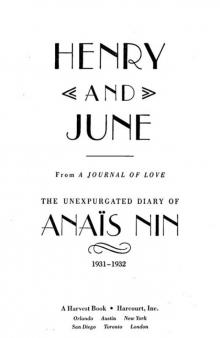 Henry and June: From A Journal of Love -The Unexpurgated Diary of Anaïs Nin (1931-1932)
Henry and June: From A Journal of Love -The Unexpurgated Diary of Anaïs Nin (1931-1932) Ladders to Fire
Ladders to Fire House of Incest
House of Incest